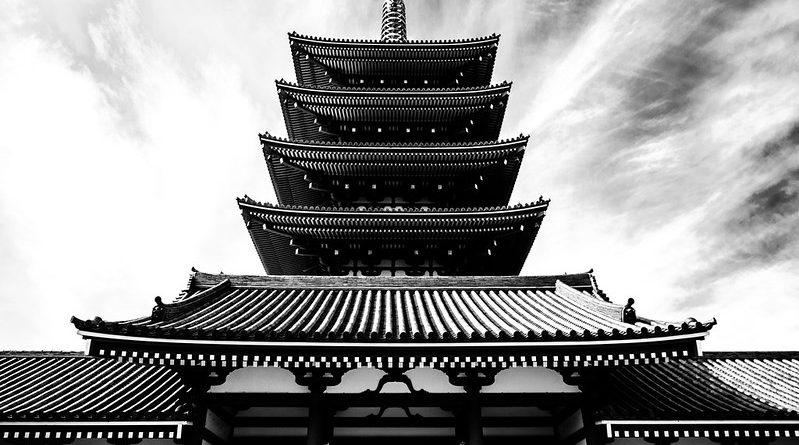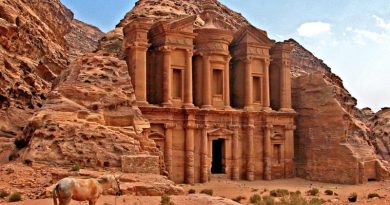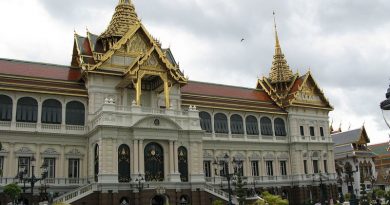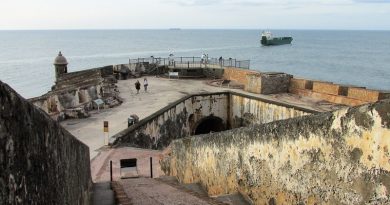Tokyo Destination Guide
Tokyo
Tokyo, Japan’s capital is one of Japan’s 47 prefectures, consisting of 23 central city wards, multiple towns and villages outside the city centre and Izu and Ogasawara Islands. The metropolis is located in the Kantō region on the south-eastern side of the main island Honshu. Known as Edo until 1868, the city is home to the Emperor of Japan and the Japanese government. A small castle town in the 16th century, Edo became Japan’s unofficial political center in 1603 when Tokugawa Ieyasu established his feudal government there. It officially became the capital after Emperor Meiji moved his seat to the city from the old capital of Kyoto in 1868.
The Tokyo metropolitan government administers each of Tokyo’s 23 Wards, which are governed as individual cities, as well as 39 municipalities in the western part of the prefecture and the two outlying islands. Large parts of Tokyo were destroyed in the Great Kanto Earthquake of 1923 and in the air raids of 1945.
Today, visitors to Tokyo are met with a seemingly unlimited choice of shopping, entertainment, culture and dining. The city’s history can be appreciated in districts such as Asakusa, and in the many museums, historic temples and gardens. Tokyo also boasts a number of attractive green spaces in the city centre and within relatively short train rides at its outskirts.
Brief History
Edo was originally a small fishing village in what was formerly the Musashi Province. In 1590, Tokugawa Ieyasu made Edo his base, transforming the town into the centre of his nationwide military government when he became shogun in 1603. From then on, Edo grew into one of the world’s largest cities and was Japan’s unofficial capital while the emperor continued to reside in Kyoto. For over 200 years, the city experienced a prolonged period of peace, during which it adopted a policy of seclusion, perpetuating the lack of serious military threat to the city. The absence of wartime preoccupations allowed Edo to devote its resources to rebuilding in the wake of the consistent natural disasters it suffered.
In 1869, Emperor Meiji moved to Edo, renaming the city Tokyo, which means “Eastern Capital.” The emperor’s residence made Tokyo the official imperial capital, despite it already being the nation’s political and cultural centre, and the former Edo Castle became the Imperial Palace. Tokyo suffered large amounts of devastation after the 1923 Great Kantō earthquake, which left 140,000 people dead, and after the persistent Allied air raids of World War II, which included the use of incendiary bombs. The bombing of Tokyo in 1944 and 1945 left more than half the city destroyed.
After the war, Tokyo was completely rebuilt and showcased during the 1964 Summer Olympics. Tokyo will also host the 2020 Summer Olympics, becoming the first Asian city to host the Olympic Games twice.
Cash = Yen £1 approximately ¥192
Travel
Tokyo has two airports: Most international flights fly into Narita Airport, along with a small number of domestic flights. It is located almost 40 miles outside of central Tokyo. Haneda Airport is more centrally located but handles mainly domestic flights, with only a few international flights.
Tokyo has a vast network of train, subway and bus lines, which are operated by numerous companies. The JR East train lines and the subway lines are the most convenient for moving around central Tokyo. JR Yamanote is the most prominent train line. It runs in a loop connecting Tokyo’s multiple city centres. Most of the suburban lines run through one of the six major stations of the Yamanote Line (Tokyo, Ueno, Ikebukuro, Shinjuku, Shibuya and Shinagawa.) The 13 subway lines operate largely within this loop.
People
Tokyo is one of the most densely populated cities in the world, with a population density of nearly 6000 persons per square kilometre. The total population of the wider Tokyo area is over 13 million, with many additional people commuting to Tokyo everyday to work. Tokyo is overwhelmingly a mono-racial society with 98% of the population being Japanese, and the remaining 2% being Korean, Chinese, Philippine, British, American, Brazilian and Peruvian. The people of Tokyo are mostly nice and polite, but they may seem distant due to the fact that they usually like to keep to themselves.
Climate
Tokyo has a humid subtropical climate, with 4 distinct seasons. The summer months (June, July and August) are hot and sticky due to high levels of humidity which can sometimes be unpleasant. Their winters can also be very cold. The rainy season is usually early June to late July, but the rain is not constant, many days are still very sunny. The recommended time to visit to experience the best weather is spring or autumn.
Language
Main language spoken in Tokyo is Japanese, with Korean also being spoken in places. In key tourist areas, text is printed in English letters as well as Japanese to aid tourists, and in these places, many people will speak at least basic English, enough to communicate with Western tourists.
Food
Japanese cuisine is based on combining the staple food which is steamed white rice with one or several main and side dishes. This may be accompanied by a miso soup and tsukemono (pickles). Japanese tradition dictates that different flavoured dishes should not touch each other on a single plate, therefore rice is served in its own small bowl and each course item is placed on its own small plate for each individual portion. Tokyo’s specialities have influenced wider Japanese cuisine – especially Japanese cuisine we know in the West.
- Originally a fast-food dish in Tokyo, Nigiri-zushi is the most popular type of sushi today. It consists of a piece of seafood put onto a small ball of rice and takes much less time and effort to prepare than more traditional sushi dishes. It is served at all sushi restaurants, but Tsukiji Fish Market is considered one of the best places to eat sushi in the world.
- Tempura is another of Japan’s most famous dishes. Originally, many vegetables were used for tempura, but cooks started to deep fry seafood from Edo Bay in tempura batter, resulting in the more varied dish we know today. A visit to a specialised tempura restaurant is strongly recommended.
- Chankonabe is a hot pot dish that is famous for being the basis of the diet of sumo wrestlers. It is a healthy, protein-rich dish that contains mainly chicken or fish and seasonal vegetables. The best place to try Chankonabe is at one of the restaurants around the Kokugikan Sumo Stadium in Ryogoku, some of which are run by ex-sumo wrestlers.
- Monjayaki is a type of runny pancake made of flour and water mixed with ingredients such as sliced cabbage and small pieces of seafood and meat, which is all then cooked on a hot grill. A small spatula is used to scrape some of the cooked monjayaki and it is eaten off the grill.
Health
There is an excellent standard of public hygiene and health in Tokyo. However, if medical assistance is necessary, there are hospitals and pharmacies located across the city. The only insurance accepted at Japanese hospitals is Japanese insurance, but hospitals are legally required to treat you even without this insurance. In addition, most doctors and nurses will probably not speak much English. Pharmacies in Japan often do not carry foreign medications, so it might be a good idea to bring your own. However, reasonable substitutes can usually be found. Furthermore, many commonly prescribed drugs (including codeine and Adderall) are controlled substances in Japan. Officially, you are supposed to prepare an import certificate for pharmaceuticals to bring these with you.
Visas
Citizens of 66 countries, including Australia, Canada, Korea, New Zealand, USA, UK and almost all European nations will automatically be issues a temporary visitor visa on arrival, which is typically good for 90 days. (Complete list of visa-exempt countries – www.mofa.go.jp/j_info/visit/visa/short/novisa.html#list) Citizens of Austria, Germany, Ireland, Lichtenstein, Mexico, Switzerland and the UK are able to extend this visa once, for another 90 days by applying at the Tokyo Regional Immigration Bureau before the initial visa expires. Anyone entering Japan on a visa for longer than 90 days will be issued a resident card. It must be carried at all times as the police can stop you at any time and ask you to produce it.
Top Five Sites to See in Tokyo
- Tsukiji Fish Market – TheTsukiji Market is the biggest wholesale fish and seafood market in the world and also one of the largest wholesale food markets of any kind. While the inner wholesale market has restricted access to visitors, the outer retail market, restaurants and associated restaurant supply stores remain a major tourist attraction for both domestic and overseas visitors. The market handles more than 400 different types of seafood from cheap seaweed to the most expensive caviar and from tiny sardines to 300kg tuna. The market is located near the Tsukijishijō Station (Toei Ōedo Line) and Tsukiji Station (Tokyo Metro Hibiya Line.) The market opens most mornings at 3:00 a.m. with the arrival of the products by ship, truck and plane from all over the world. The market is the busiest between 5:30 and 8:00 a.m. The main reason for going at 5 a.m. is to catch the live tuna auctions. Before you go, however, be sure to check if public access is permitted that day. If so, it will be on a first-come, first-serve basis, and limited to 120 people, admitted in two shifts of 60. Activity at the market declines significantly after 8:00 or 9:00a.m., and many shops and stalls close around 11:00a.m.
- Meiji Shrine – Meiji Shrine is the Shinto shrine dedicated to the deified spirits of Emperor Meiji and his wife, located in Emperor Meiji was the first emperor of modern Japan. Born in 1852, he assumed the throne in 1867 at the peak of the Meiji Restoration (the period when Japan’s feudal era came to an end and the emperor’s power was restored). During the Meiji Period, Japan underwent modernisation and westernisation to join the world’s major powers by the time Emperor Meiji passed away in 1912. Tokyo’s most famous Shinto shrine is wonderfully serene and austere. The 40-foot-high torii gate at the entrance to the 200-acre Yoyogi Park is made of 1,500-year-old cypress, and there’s a similar one closer to the shrine itself. There are entrances located near Harajuku Station and Yoyogi Station, from which the main complex of shrine buildings is a 10 minute walk.
- Shinjuku Gyeon – Shinjuku Gyoen National Gardenis considered the most beautiful green space in Tokyo. It originated during the Edo Period (1603-1867) as a feudal Lord’s Tokyo residence before being converted into a botanical garden. It was then transferred to the Imperial Family in 1903 who used it for the entertainment of guests and for recreational activities. There are many gardens within the boundary, the oldest being a traditional Japanese landscape garden featuring large ponds dotted with islands and bridges. The other gardens include a symmetrical French Formal garden and an English landscape garden which features wide, open lawns surrounded by cherry trees. There is also the curiously named Mother and Child Forest (Haha to Ko no Mori). The rest of the park consists of forested areas, lawns and several structures including a restaurant and an art gallery. In cherry blossom season (late March and early April) the central lawn areas are especially beautiful. Shinjuku Gyoen is open from 9 a.m. to 4 p.m. Tuesday through Sunday, and is located a short walk from Shinjuku-gyoemmae Station (Marunouchi Line) or Sendagaya Station (Chūō-Sōbu Line.)
- Tokyo Skytree – Tokyo Skytreeis a broadcasting, restaurant, and observation tower in It reached its full height of 2,080 ft in March 2011, making it the second tallest structure in the world. A large shopping complex with aquarium is located at its base. The highlight of the Tokyo Skytree is its two observation decks which offer spectacular views out over Tokyo. The two enclosed decks are located at heights of 350 and 450 meters respectively, making them the highest observation decks in Japan and some of the highest in the world. The lower of the two decks, Tembo Deck, is 350 meters high and spans three levels. The top floor features tall, broad windows that offer some of the best 360 degree panoramic views of the city. The middle floor has a souvenir shop and the Musashi Sky Restaurant, which serves French-Japanese fusion cuisine, while the lowest floor features a cafe and some glass panels on the ground from where you can look all the way down to the base of the tower. At 450 meters is the Tembo Gallery. “The world’s highest skywalk” consists of a sloping spiral ramp that gains height as it circles the tower. Visitors are able to look down and out over the Kanto Region. It is located between the Tokyo Skytree/Narihirabashi Station (Tobu Isesaki Line) and Oshiage Station (Asakusa Subway, Hanzomon Subway and Keisei Oshiage Lines) and is open 7 days a week.
- Tokyo National Museum – TheTokyo National Museum is the oldest Japanese national museum and the largest art museum in Japan. The museum collects, houses, and preserves Asian art and archaeological objects, holding over 110,000 objects. The museum is made up of six separate buildings, each specialising in different types of art. The main Honkan building was opened in 1938, exhibiting a variety of Japanese artwork from ancient times to the 19th century including antique Buddhist statues, ceramics and maps as well as cultural items like masks, costume, and weapons. Built in 1909, the oldest building on the grounds is the Hyokeikan, which is mainly used for temporary exhibitions. The Toyokan building features galleries displaying Asian art and artefacts from China, Korea, Southeast Asia, Central Asia, India and Egypt. Behind the Honkan is the Heiseikan, housing exhibitions on ancient Japanese cultures as well as large scale special exhibitions. The Horyuji Homotsukan (Gallery of Horyuji Treasures) is the museum’s newest building and was built to house a collection of religious objects consisting mostly of small, intricate statues and copper relief images. Finally, just outside the museum grounds stands the Kuroda Memorial Hall, which was built from donations by Kuroda Seiki, the most prominent Western-style Japanese artist. The hall houses a collection of Kuroda’s paintings and sketches as well as other artwork that has been donated by his family. The museum is located inside Ueno Park in Taito in Northern Tokyo and all information is available in English, French, German and Spanish.
Top Five Things to Do in Tokyo
- Eat sushi!
- Experience sumo – Ryogoku is the centre of the sumo world. It is the district in Northern Tokyo which holds the Ryogoku Kokugihan (sumo stadium) and many other sumo related attractions. The stadium seats over 10,000 spectators and hosts three of the six annual sumo tournaments: one in January, one in May and one in September. Sumo wrestlers live and train in so-called sumo stables, of which many are located in Ryogoku. Some stables allow visitors to view the sumo practice in the early morning hours but most require advance applications by phone and some request that guests are accompanied by a Japanese speaker.
- Shibuya – In the Shibuya ward is the famous shopping district surroundingShibuya Station, one of Tokyo’s busiest railway stations. It is one of Japan’s major fashion centres, particularly for young people, and boasts great nightlife. It is famous for its scramble crossing at which traffic from all directions stops to allow pedestrians to occupy the entire intersection. The intersection itself is adorned with large advertising screens, causing it to be likened to London’s Piccadilly Circus and New York’s Times Square.
- Visit the historic district – the atmosphere of Tokyo’s past survives in The main attraction is Sensoji, a very popular Buddhisttemple, built in the 7th century, but the area is home to many shrines and temples. For many centuries, Asakusa was Tokyo’s leading entertainment district. It was the site of kabuki theaters and a large red light district until the late 1800s and early 1900s when modern types of entertainment such as movie theaters, were established in Asakusa. The area can easily be explored on foot.
Karaoke – Karaoke is a popular Japanese past-time. There are two types of Karaoke bar in Japan. So-called Karaoke Boxes are private rooms for one party of friends, with a waiter delivering drinks. But increasingly, more public, Western-style Karaoke bars are becoming popular in Tokyo. Smash Hits is a particularly popular one with an array of English songs to choose from.




